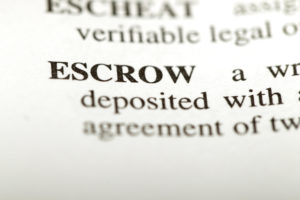** “In this world nothing can be said to be certain, except class actions and taxes.” – (paraphrasing) Ben Franklin **
By: Brent E. Johnson
 While tax season is now behind most of us, things are just starting to heat up for Intuit, Inc., owner of one of the largest online tax preparation systems – TurboTax. On April 12, 2016, Intuit was sued in a putative class action in the U.S. District Court for the District of New Jersey over warranty and damage limitations in TurboTax’s Terms of Service. Rubin v. Intuit Inc., Case No. 3:16-CV-02029 (Dist. N.J. April 12, 2016) (Dkt. No. 1). The claim is made under New Jersey’s Truth in Consumer Contract, Warranty and Notice Act (“TCCWNA”), N.J.S.A 56:12-14 et seq. Due, perhaps, to its difficult-to-remember acronym, the TCCWNA gathered dust on the shelves of plaintiff consumer lawyers for the first thirty years of its existence. This is surprising given that the TCCWNA has two significant advantages over New Jersey’ other consumer statute, The Consumer Fraud Act (“CFA”), N.J.S.A. 56:8-1 et seq.: (1) The TCCWNA provides for a minimum of $100 statutory damages per consumer (N.J.S.A. 56:12-17) and (2) The TCCWNA doesn’t require putative class members to have actually purchased anything. N.J.S.A. 56:12-15 (TCCWNA applies to “consumer[s] or prospective consumer[s]”). .
While tax season is now behind most of us, things are just starting to heat up for Intuit, Inc., owner of one of the largest online tax preparation systems – TurboTax. On April 12, 2016, Intuit was sued in a putative class action in the U.S. District Court for the District of New Jersey over warranty and damage limitations in TurboTax’s Terms of Service. Rubin v. Intuit Inc., Case No. 3:16-CV-02029 (Dist. N.J. April 12, 2016) (Dkt. No. 1). The claim is made under New Jersey’s Truth in Consumer Contract, Warranty and Notice Act (“TCCWNA”), N.J.S.A 56:12-14 et seq. Due, perhaps, to its difficult-to-remember acronym, the TCCWNA gathered dust on the shelves of plaintiff consumer lawyers for the first thirty years of its existence. This is surprising given that the TCCWNA has two significant advantages over New Jersey’ other consumer statute, The Consumer Fraud Act (“CFA”), N.J.S.A. 56:8-1 et seq.: (1) The TCCWNA provides for a minimum of $100 statutory damages per consumer (N.J.S.A. 56:12-17) and (2) The TCCWNA doesn’t require putative class members to have actually purchased anything. N.J.S.A. 56:12-15 (TCCWNA applies to “consumer[s] or prospective consumer[s]”). .
Which brings us to TurboTax. Intuit has a fairly standard Terms of Service page on its website that users must agree to – terms of service that are particularly apropos for a company whose principal service results in the filing of income tax returns under penalty of perjury by consumers who tend to wait until the last minute to perform this painful task with varying degrees of care. These terms include an acknowledgement by the user that “THE SITE IS PROVIDED ‘AS IS,’ WITHOUT ANY WARRANTY OF ANY KIND, EITHER EXPRESS OR IMPLIED” as well as an agreement that “DIRECT, INDIRECT, INCIDENTAL, SPECIAL OR CONSEQUENTIAL DAMAGES” are prohibited. Of course, TurboTax’s terms also provide that, where the laws of particular states do not permit Intuit to limit its liability in certain ways, those limitations do not apply to users in those states, but otherwise, “THE . . . LIABILITY OF INTUIT . . . IS LIMITED TO THE GREATEST EXTENT PERMITTED BY SUCH STATE LAW.”
How can such common provisions in website terms of use result in liability under New Jersey law? Enter the TCCWNA, which provides, “No seller . . . shall in the course of his business offer to any consumer or prospective consumer or enter into any written consumer contract or give or display any written consumer warranty, notice or sign . . . which includes any provision that violates any clearly established legal right of a consumer . . . established by State or Federal law.” N.J.S.A 56:12-15. In Rubin, the plaintiffs contend that Intuit’s standard warranty limitations violate New Jersey common law and State and Federal statutes, including New Jersey’s Products Liability Act, its Punitive Damages Act, and the Uniform Commercial Code.
“But wait!” you say. What about Intuit’s statement in the TurboTax Terms of Service that the damages limitations are void where prohibited? Ironically, according to the plaintiffs, that provision is not only not exculpatory – it’s actually a separate violation of the TCCWNA. The New Jersey statute provides, “No consumer contract, notice or sign shall state that any of its provisions is or may be void, unenforceable or inapplicable in some jurisdictions without specifying which provisions are or are not void, unenforceable or inapplicable within the State of New Jersey; provided, however, that this shall not apply to warranties.” N.J.S.A. 56:12-16. Even when a company tries to comply with state statutes, it may be violating New Jersey’s TCCWNA.
It will be interesting to see whether the U.S. Supreme Court’s anticipated decision in Spokeo, Inc. v. Robbins, No. 13-1339, cert. granted (U.S. April 27, 2015) will have an impact on the progress of TCCWNA cases. In Spokeo, the Supreme Court is mulling over whether a plaintiff/class representative has standing to assert claims based upon the violation of federal statutes – in that case the Fair Credit Reporting Act – where the plaintiff has not been injured. If the Court determines that there is no standing if there is no injury, that reasoning may have some applicability to the TCCWNA, which does not require the plaintiff to have even used the service or purchased the product. In addition, it’s an open question as to whether “prospective consumers” can be included in a putative TCCWNA — at least in federal court in the Third Circuit — under the circuit’s ascertainability requirement: Can there be “a reliable and administratively feasible mechanism for determining whether putative class members fall within the class definition” [Carrera v. Bayer Corp., 727 F.3d 300, 355 (3d Cir. 2013)],where the class consists of anybody who laid eyes on a website’s terms of use? But for the forseeable future, ecommerce companies should closely review their terms of use to ensure that they do not run afoul of the TCCWNA.


